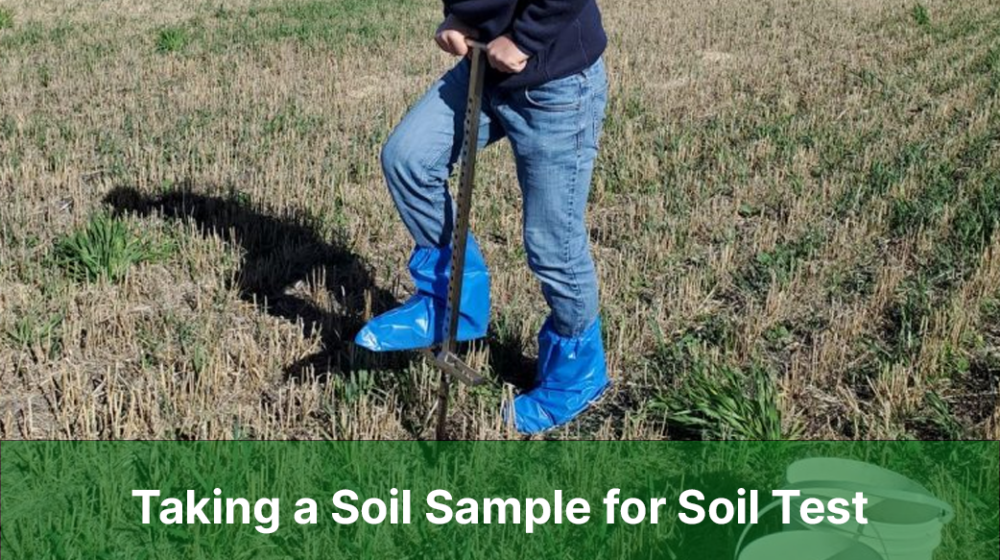Taking a Soil Sample for Soil Test
Soil tests are an important part of any gardening or farming operation. They can help you determine the nutrient levels in your soil, identify any potential problems, and recommend the best fertilizer program for your needs.
To take a soil sample, you will need a soil probe or shovel, a clean bucket, and a soil sample bag.
- Choose a representative sample area. Avoid taking samples from areas that have been recently fertilized or amended, or that have had a lot of foot traffic.
- Dig a hole about 6 inches deep and 6 inches wide.
- Use the soil probe or shovel to remove a core of soil from the hole.
- Repeat steps 2 and 3 until you have collected about 1 cup of soil.
- Place the soil in the clean bucket.
- Repeat steps 1-5 for each area of your garden or farm that you want to test.
- Once you have collected all of your soil samples, transfer them to a soil sample bag.
- Label the soil sample bag with the name of your garden or farm, the date of the sample, and the location of the sample.
- Send the soil sample to a soil testing lab.
The soil testing lab will analyze your soil sample and send you a report with the results. The report will include information on the nutrient levels in your soil, the pH level, and any other potential problems.
With the results of your soil test, you can develop a fertilizer program that will help you improve the health of your soil and the productivity of your garden or farm.
Here are some additional tips for taking a soil sample:
- Take your soil samples in the fall or early spring, when the soil is moist but not wet.
- Avoid taking samples from areas that have been recently tilled.
- If you are taking samples from a large area, you can take composite samples. To do this, collect several small samples from different areas and combine them into one sample.
- Be sure to label your soil samples carefully.
- Send your soil samples to a reputable soil testing lab.
By following these tips, you can ensure that your soil samples are accurate and that you get the most out of your soil test.
- soil test
- soil sampling
- soil analysis
- soil nutrient testing
- soil pH test
- soil fertility test
- soil test kit
- soil test cost
- where to get a soil test
- how to take a soil sample
Soil tests are conducted to assess the nutrient and pH levels of soil. They are an essential part of any gardening or farming operation, as they can help you determine the best fertilizer program for your needs and identify any potential problems with your soil.
There are many different reasons to conduct a soil test. Some of the most common reasons include:
- To determine the nutrient levels in your soil. This is important for ensuring that your plants are getting the nutrients they need to grow healthy and productive.
- To identify any potential problems with your soil. For example, a soil test can show if your soil is too acidic or alkaline, or if it is lacking in certain nutrients.
- To develop a fertilizer program. The results of a soil test can help you determine the type and amount of fertilizer that your plants need.
- To improve the quality of your soil. By adding the right nutrients to your soil, you can improve its fertility and make it easier for your plants to grow.
If you are new to gardening or farming, it is a good idea to have your soil tested before you start planting. This will give you a baseline understanding of the nutrient levels in your soil and help you make the best decisions for your plants.
Soil tests can be conducted by a variety of laboratories. Some garden centers and nurseries offer soil testing services, or you can send your soil samples to a commercial laboratory. The cost of a soil test will vary depending on the laboratory you use and the number of tests you request.
Once you have your soil test results, you can work with a professional horticulturist or agronomist to develop a fertilizer program that is tailored to your specific needs. With proper care and management, your soil can be a valuable asset to your gardening or farming operation for many years to come.
Here are some additional tips for getting the most out of your soil test:
- Take your soil samples at the right time of year. The best time to take soil samples is in the fall or early spring.
- Follow the instructions carefully. When taking soil samples, it is important to follow the instructions carefully to ensure that the results are accurate.
- Send your soil samples to a reputable laboratory. There are many different laboratories that offer soil testing services. Be sure to choose a laboratory that is reputable and has a good reputation for accuracy.
- Interpret your results correctly. The results of your soil test will be provided in a report. Be sure to read the report carefully and understand the results before making any changes to your fertilizer program.
By following these tips, you can get the most out of your soil test and ensure that your plants are getting the nutrients they need to grow healthy and productive.
